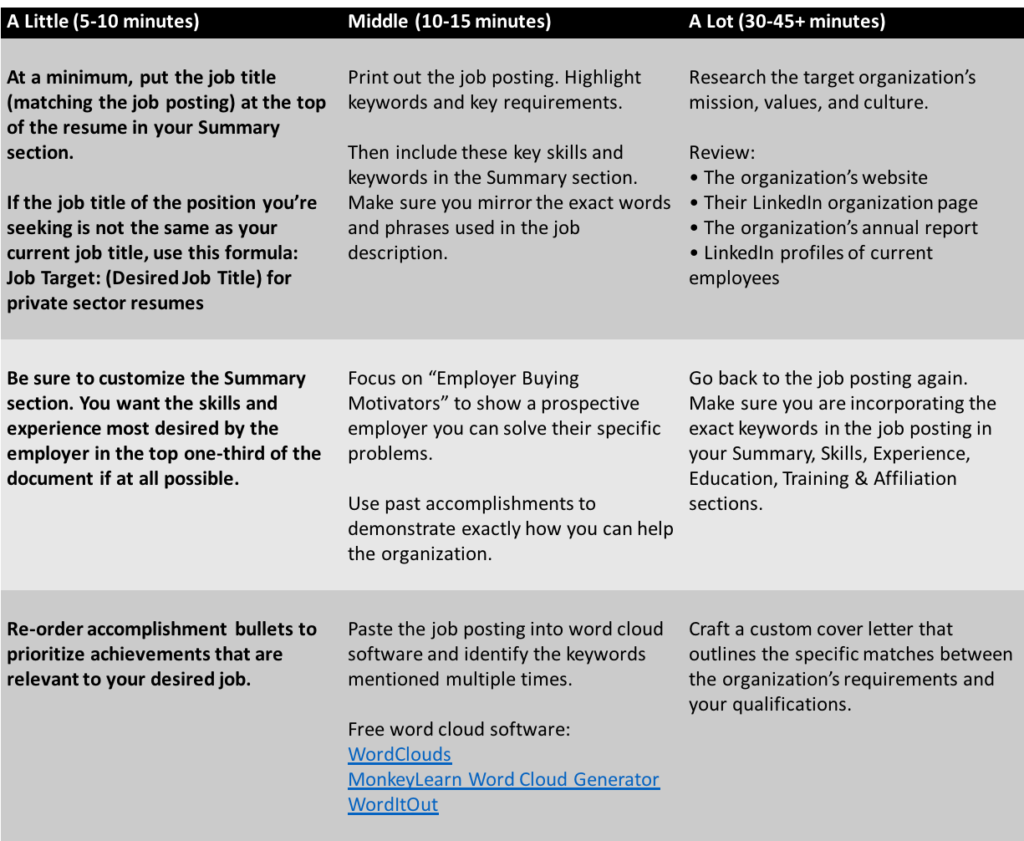I haven’t met anyone yet who thinks writing resumes is fun…except for professional resume writers. If you are staring at your own resume and deciding what to do, here are some thoughts to help you determine if you really should start over.
How long ago was your resume created or updated?
- If your resume was created within 12 to 18 months, and you’re seeking a similar role to your current position, the answer is easy: Update your existing document. If the resume was created 18 months to 3 years ago, and you’re seeking a similar role, the right answer is probably to update the existing resume.
- The more difficult choice is if the resume was created between 3-5 years ago. In that case, review the resume format. If the structure is still modern in appearance, and adding the new information doesn’t substantially affect the format, a refresh is most likely the right choice.
- If the resume was created more than 5 years ago, 99 times out of 100, the right answer is to start over.
Are you seeking a new role in the same profession/career field, or are you changing professions?
- If you are pursuing a new role in a different field, whether to refresh or do over depends on if the industry you are targeting has different standards for resumes than your current industry. Moving from the federal to the private sector or vice versa would qualify as a do-over.
- If you are changing careers entirely, you will want to start fresh. You can’t use the same resume for substantially different positions. If you’re a teacher and want to pursue a role in outside sales, your education-focused resume won’t work. If you’re a former trial lawyer who is seeking a role in nonprofit administration, you’ll want a new format that showcases your transferable skills.
Is there an “Objective” statement at the top of your resume?
- If the answer is yes, you need an overhaul. Even removing the objective statement probably won’t be enough to meet the standards of a modern resume, since the content in the top 1/3 of the resume is so critical. (It needs to be replaced with branding statements and content that showcases your qualifications.)
Has your existing resume gotten too long?
- Federal resumes typically run 4-6 pages (the longest I’ve ever seen was 67 pages and included footnotes!!); a private sector one should not typically exceed 2 pages. If your resume includes 25 years of work experience in excruciating detail, it may be time to start completely from scratch. The reason is: If you’ve just constantly added new positions without thinking through the strategy of what you’re including on your resume, it may be best to start over.
If you need assistance with your resume you can check out our Resume Writing Services or Contact Us for help! There are also many videos about resume writing on our YouTube channel like ‘Essential Tips for Writing Your Federal Resume‘.



